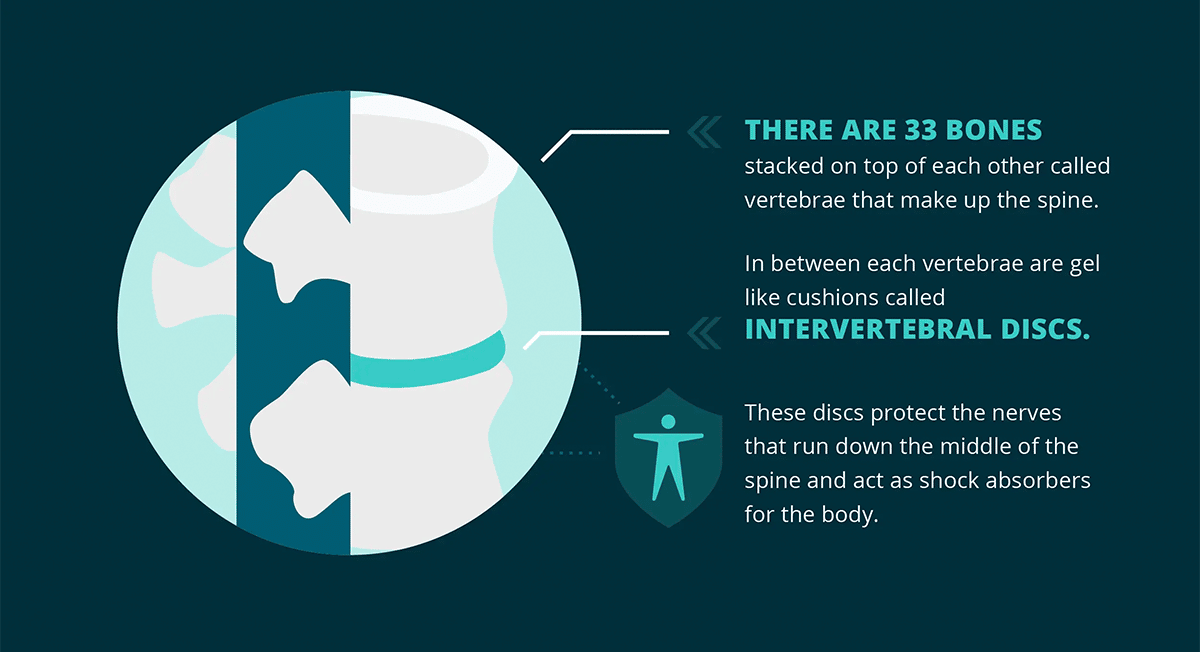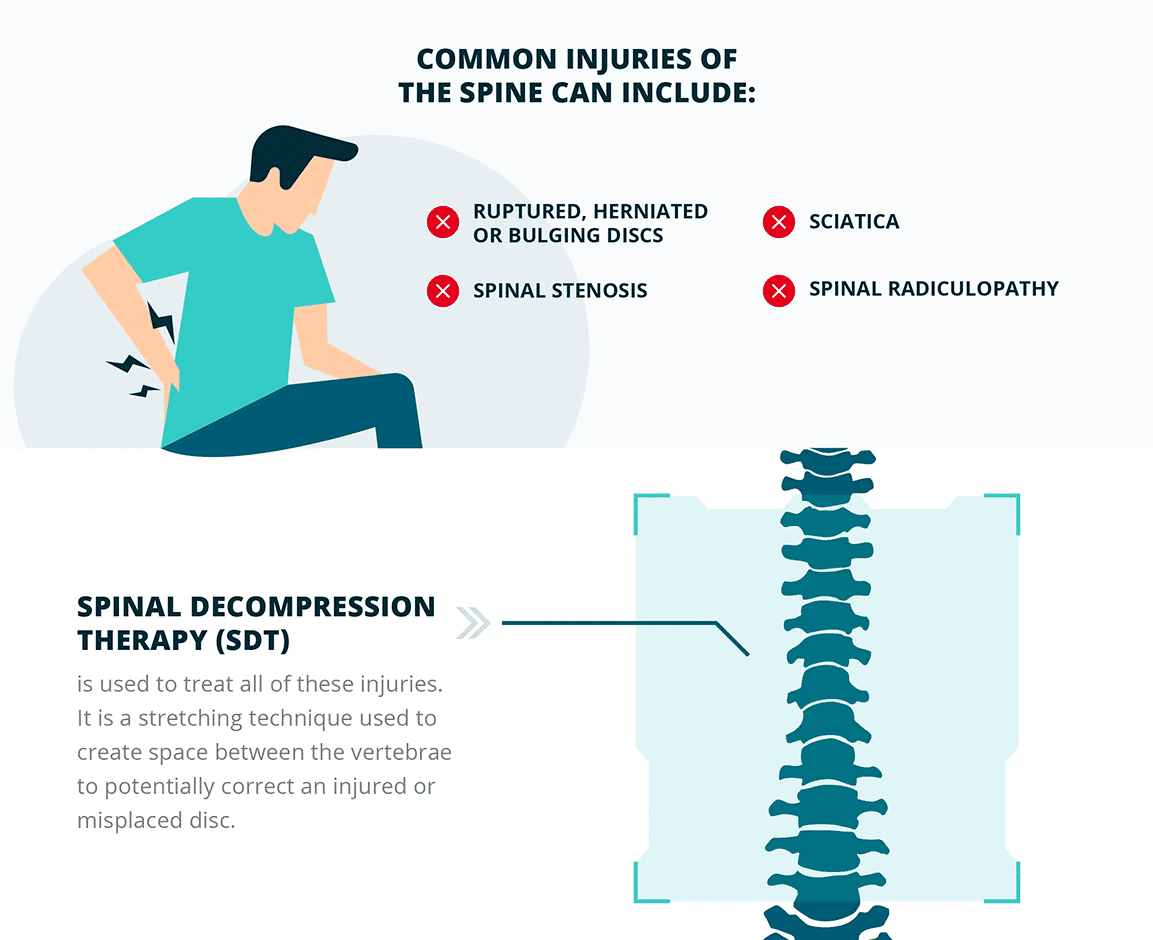Surgery or pain medications aren’t your only options if you’re suffering from chronic neck or back pain. If traditional treatments haven’t worked for you in the past, you may experience long awaited relief through the use of spinal decompression therapy.
Not as scary as it sounds, spinal decompression therapy is a method of gently stretching the spine to alleviate tension and pressure. To understand how it works, you may need to first familiarize yourself with the spine.
Spinal Decompression [Infographic]





Anatomy of the Spine
The human spine is divided into three major sections:
- Cervical – makes up the neck and has 7 vertebrae
- Thoracic – makes up the upper back and has 12 vertebrae that attach to the ribs
- Lumbar – makes up the lower back and has 5 vertebrae

Vertebrae are the small bones that make up the backbone. They have a hole in the middle where the spinal cord runs through, and several projections that serve as muscle attachments. In between each pair of vertebrae are the intervertebral discs. These are cushion, or gel-like discs. They serve as ligaments to hold the vertebrae together, protect the surrounding nerves, allow for movement, and act as shock absorbers for the rest of the body.
When one of these discs become injured or damaged, either from an accident or illness, pieces can break off, or they can start to bulge which puts pressure on surrounding nerves. Often referred to as a pinched nerve, or a ruptured, bulging, or herniated disc, they can be excruciating and debilitating.
What is Spinal Decompression Therapy?
The basic concept of SDT is to create space between each vertebrate to reposition the affected disc. This in turn alleviates the pressure on the nerves and relieves pain and numbness. Using a traction table, or other motorized device, the spine is stretched in different sessions, depending on circumstances and results.
Each treatment session lasts, on average, between 30-45 minutes, and patients typically undergo 15-30 sessions.
Spinal Decompression Therapy Can Treat:
- Spinal Radiculopathy – A condition due to a compressed nerve in the spine that can cause pain, numbness, tingling, or weakness of the nerve. It is most common in the lower back and neck.
- Myelopathy – A nervous system disorder that affects the spinal cord.
- Claudication – A common symptom of lumbar spinal stenosis, causing inflammation of the nerves emerging from the spinal cord.
- Bulging, Degenerating, or Herniated Discs – A condition where the soft center of a spinal disk pushes through a crack in the tougher exterior casing. It can irritate nearby nerves and result in pain, numbness, or weakness in an arm or leg.
- Sciatica – Pain radiating along the sciatic nerve, which runs down one or both legs from the lower back. It’s primarily caused when a herniated disk or bone spur in the spine presses on the nerve. It usually only affects one side of the body.
- Spinal Stenosis – A narrowing of the spaces within your spine, which can put pressure on the nerves. It occurs most often in the lower back and the neck.
Experiencing Neck and Back Pain After a Car Accident?
Contact us today to schedule an appointment. You don’t have to live your life in pain, we’re here to help!
Learn more about our Spinal Decompression Therapy

